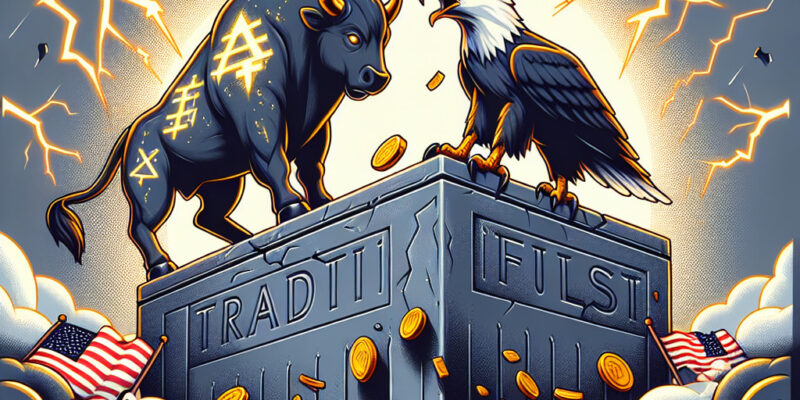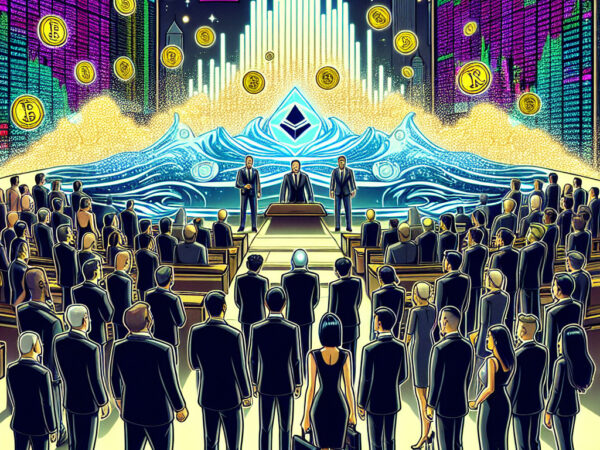TradFi Surges in Debasement Trade: Bitcoin & Gold Set for Gains

In a world where the financial landscape is constantly evolving, traditional financial institutions, often referred to as TradFi, are finding themselves at a pivotal moment. As the US dollar shows signs of weakening, a growing number of these institutions are turning their attention to what is known as the “debasement trade.” This move has significant implications for assets like Bitcoin and gold, which have long served as hedges against currency decline.
The term “debasement trade” refers to a strategy where investors pivot towards assets that can maintain or increase in value as fiat currencies lose purchasing power. Historically, the devaluation of currency is not an uncommon occurrence. Over time, factors such as inflation, government fiscal policies, and other macroeconomic variables can erode the value of a currency. Presently, the US dollar, facing a variety of pressures, is at the center of this discourse.
As financial executives evaluate the current economic indicators, they are increasingly recognizing the potential benefits of debasement trade. Bitcoin and gold, both revered for their scarcity and perceived stability, are emerging as prime beneficiaries of this strategy. For Bitcoin, the appeal lies in its decentralized nature and finite supply. Its algorithmic limit of 21 million coins offers a stark contrast to the limitless printing of fiat money. On the other hand, gold, with its centuries-long reputation as a store of value, continues to attract investors seeking safety from economic turbulence.
This growing interest in alternative assets is not an isolated phenomenon. It’s a part of a broader trend where traditional financial entities are starting to integrate digital assets into their portfolios. The convergence of technology and finance has made cryptocurrency accessible to a larger audience, and institutions are eager to capitalize on this shift. The recent surge in debates regarding central bank policies and inflation rates has only heightened this interest.
However, it’s not without its complexities and contradictions. The adoption of the debasement trade by TradFi institutions highlights a subtle irony. These are the same establishments that, not too long ago, might have dismissed digital currencies as speculative or unsustainable. Yet, in the face of a weakening dollar and economic uncertainties, they find themselves drawn to the very assets that challenge the traditional financial systems.
In this fluid financial environment, it’s worth noting that both Bitcoin and gold have their own sets of challenges and risks. Bitcoin’s value can be volatile, influenced by regulatory news and market sentiment. Gold, while stable, does not provide the potential for exponential growth that some cryptocurrencies might offer. Thus, investors are tasked with the balancing act of securing safety while seeking growth.
As TradFi institutions navigate this new terrain, their strategies and decisions will be pivotal in shaping the future of global finance. Whether Bitcoin and gold will see substantial gains remains to be seen, but the increasing traction of the debasement trade suggests that these assets will continue to play an important role in the evolving financial narrative.
The journey ahead promises to be as fascinating as it is complex, as traditional and digital worlds continue to intermingle, creating new pathways for investors and reshaping the financial landscape of the future.













